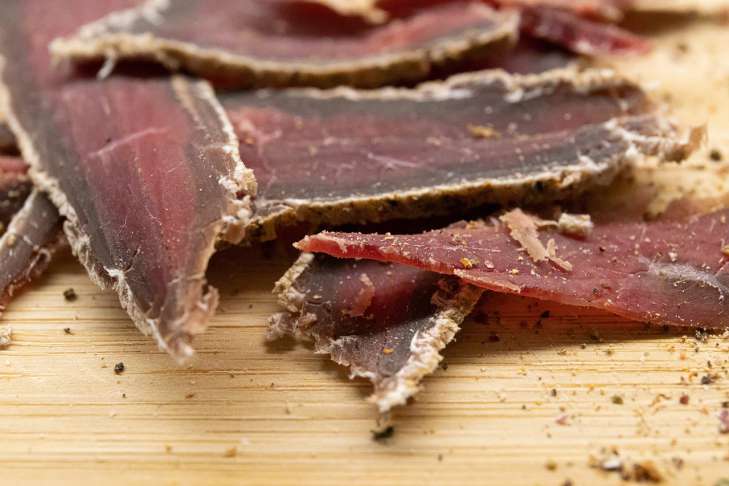Jerky: Health Benefits
The jerky has a savory but not harsh flavor with distinct notes of coriander.
The benefits of jerky
Jerky is a powerhouse of nutrients: Vitamins A, B1, B2, B12, D3, as well as taurine, creatine and zinc.
The presence of each of them allows the body to work and develop properly.
Dried meat is useful when there is a lack of protein and animal fats in the diet; it is recommended for those with iron deficiency anemia, as well as for athletes to build muscles and for fatigue.
The drying technology preserves in the finished product all the beneficial substances contained in fresh meat: protein (there is 35...40%), fats (15...18%), vitamins (primarily A, B and PP), microelements (magnesium, iron, phosphorus, calcium, zinc), amino acids.

What is the difference between dried and jerky meat
Which is better and what's the difference? Drying differs from drying primarily in time.
Drying involves a fairly long process - from 24 hours, during which the meat is fermented and acquires the taste of the finished product.
Drying usually takes 5-7 hours and does not include the fermentation process of the meat.
How to eat dry-cured meat
Without excess water, meat is still rich in protein, and in dry-cured products, protein, vitamins, microelements and amino acids retain their natural structure.
You can eat dried and jerky meat as an independent dish, for example, as a snack.
Or you can add it to soup to make a hearty porridge.
How long can jerky last in the refrigerator
Properly organized storage allows you to leave dried meat for a period of: up to 1 month - in a moderately cool place, for example, in a pantry; up to six months - on any shelf of the refrigerator; up to one year - in a freezer.


